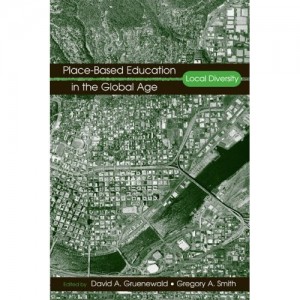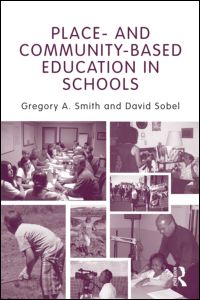Module 4 – Sharing Our Pathways: Native Perspectives on Education in Alaska
This important book was published in May 2011 as the Alaska Native Knowledge Network prepared a collection of essays derived from articles first published by the Alaska Rural Systemic Initiative’s (AKRSI) newsletter publication Sharing Our Pathways. The primary purpose of AKRSI was to systematically document native ways of knowing, the Indigenous knowledge systems used by Alaska Native people and use this information to develop curricula to be taught in Alaska’s schools. Sharing Our Pathways: Native Perspectives on Education in Alaska was edited by Ray Barnhardt and Angayuqaq Oscar Kawagley. Dr. Barnhardt is Director of the University of Alaska Fairbanks Cultural Studies Department. The late Dr. Kawagley, who passed this April, conceived the notion of using indigenous methodology to teach students in the schools. Kawagley and Barnhardt worked closely together for many years to foster the use of cultural and curriculum resources developed by AKRSI. Sharing Our Pathways is broken into five pathways to education that each represents values held by the Athabascan, Iñupiaq, Tlingit/Haida, Unangan/Alutiiq and Yup’ik/Cup’ik peoples.
November 30, 2011 No Comments
Module 4 – Place-based Education in the Global Age: Local Diversity

Through literature survey for my research project I found this book; Place-based Education in the Global Age: Local Diversity (by Smith and Gruenwald, 2008) as an important and timely collection of work that explains how Indigenous people should reintegrate their own knowledge systems into the school curriculum as a basis for connecting what students learn in school with life out of school. This process has sought to restore a traditional sense of place while at the same time broadening and deepening the educational experience for all students.
The book frames place-based pedagogy not just as an alternative teaching methodology or novel approach to environmental education but as part of a broader social movement which aims toward reclaiming the significance of the local in the global age. Meanwhile, it links development of ecological awareness and stewardship to concerns about equity and cultural diversity. Several examples of place-based education in action that discuss the connections between learners and their wider communities are also demonstrated in this book.
November 20, 2011 No Comments
Module 4 – Measuring Success in First Nations, Inuit and Métis Learning
I found this article (by Paul Cappon, 2008) as an interesting one because although the Canadian Council on Learning (CCL) has developed the world’s first composite learning index to track Canada’s progress in lifelong learning but data gaps hamper measurement of success among Aboriginal learners. This study explains how CCL and its Aboriginal Learning Knowledge Centre, in partnership with Aboriginal people and organizations, have taken important steps to rectify that. First Nations, Inuit and Métis holistic lifelong learning models illustrate the place of learning in the Aboriginal world view, its sources, how people learn and the connection between learning and community well being. Most important, they help identify what learning success means for Aboriginal communities and provide a framework of indicators to track progress. Those learning models can re-frame what has too often been regarded as an intractable policy challenge and transform it into an exciting field of opportunity with multiple benefits for the success of Aboriginal learners, for the regeneration and well-being of First Nations, Inuit and Métis communities, for regional and national economies and for the health and social cohesion of Aboriginal and Canadian society.
http://www.ccl-cca.ca/NR/rdonlyres/0D0A5FA7-1191-43D9-A46D-F13D7C9BECAB/0/Cappon_PolicyOptions.pdf
November 19, 2011 No Comments
Module 4 – Place and Community-based Education in Schools
Place and Community-based Education in Schools (2010) is a book by Gregory A. Smith and David Sobel. Their discussion about an approach to teaching and learning that starts with the local, addresses two critical gaps in the experience of many children now growing up in North America: contact with the natural world and contact with community. The book offers a way to extend young people’s attention beyond the classroom to the world as it actually is, and to engage them in the process of devising solutions to the social and environmental problems they will confront as adults. This approach can increase students’ engagement with learning and enhance their academic achievement.
The book also explains the purpose and nature of place and community-based education and provides multiple examples of its practice. Through the book, the detailed descriptions of learning experiences set both within and beyond the classroom help me and other readers understand the process of advocating for or incorporating local content and experiences into schools.
November 18, 2011 No Comments
Module 4 – INUIT TAPIRIIT KANATAMI (ITK)
Inuit Tapiriit Kanatami (ITK) is the national Inuit organization in Canada, representing four Inuit regions – Nunatsiavut (Labrador), Nunavik (northern Quebec), Nunavut, and the Inuvialuit Settlement Region in the Northwest Territories. Founded in 1971 ITK represents and promotes the interests of Inuit on a wide variety of educational, environmental, social, cultural, and political, issues and challenges facing Inuit on the national level.
ITK web page has a publications section that contains a wide range of important resources related to Inuit education. As an example, through studying for my research paper I found a very interesting article: “The Literature on Inuit-Centred Curriculum and Teaching Approaches” that explains three dominant themes in the literature concerning Inuit-centred curriculum and teaching approaches as: 1) importance of understanding the broad social and economic relations which shape curriculum; 2) analysis and recommendations regarding pedagogy for Inuit-centred teaching and curriculum; and 3) policy and governance issues affecting Inuit-centred curriculum and teaching. (http://www.itk.ca/publication/documentation-national-strategy-inuit-education). In terms of practice and policy, the article also reveals many experiments and innovations for Inuit curriculum and teaching.
November 17, 2011 No Comments
Module 4: The State of Aboriginal Learning in Canada
While I was studying the Indigenous peoples’ learning approaches for my research paper, I found the following important document. This is a report that introduces the Holistic Lifelong Learning Measurement Framework used to measure the state of Aboriginal learning in Canada. The three main elements of this framework are: sources and domains of knowledge; the lifelong learning journey; and community well-being.
According to the report, sources and domains of knowledge serve as important contributions to Aboriginal learning as a holistic, lifelong process. This element of the framework includes the various learning indicators related to language, culture, the natural world and the world of people (family, Elders, community). Second part of the report (the journey of lifelong learning) measures learning across the lifespan and in different environments such as school, home, community, work and the land. This element of the framework includes the various indicators related to learning for infants and children, youth, young adults, adults and elders. In Final part of this document, community well-being indicators are presented that highlight how economic, health and social challenges can impact Aboriginal people’s learning opportunities.
http://www.ccl-cca.ca/pdfs/StateAboriginalLearning/SAL-FINALReport_EN.PDF
November 13, 2011 No Comments
International Work Group for Indigenous Affairs
International Work Group for Indigenous Affairs (IWGIA) is an international human rights organization staffed by specialists and advisers on indigenous affairs. IWGIA supports indigenous peoples’ struggle for human rights, self-determination, right to territory, control of land and resources, cultural integrity, education and the right to development. IWGIA works at local, regional and international levels to further the understanding and knowledge of, and the involvement in, the cause of indigenous peoples. Through publications, human rights work, networking, conferences, campaigns and projects, IWGIA supports indigenous peoples in their struggle to improve general life conditions, to better relationships with the nation states of which they are part, and to influence the global economic and political forces that affect their lives. The publication and dissemination of information of IWGIA website includes books, manuals, reports, journal and videos that explain Indigenous people, their life and their rich diverse cultures.
November 6, 2011 No Comments
Overcoming Indigenous Disadvantage
Overcoming Indigenous Disadvantage report was released on 25 August 2011. Starting in 2002, the Council of Australian Governments commissioned the Steering Committee to produce a regular report against key indicators of Indigenous disadvantage. This report has an important long-term objective. It is to inform Australian governments about whether policies and programs are achieving positive outcomes for Indigenous people. This will help guide where further work is needed. The report is composed of different topics related to Indigenous people. The report presents valuable information related to education and training, healthy lives, economic participation, home environment, safe and supportive communities, governance/leadership, and measuring multiple disadvantage of Indigenous people in Australia.
http://www.pc.gov.au/gsp/reports/indigenous/key-indicators-2011
November 5, 2011 No Comments
Centre for World Indigenous Studies
The Center for World Indigenous Studies (CWIS) is an independent, non-profit research and education organization dedicated to wider understanding and appreciation of the ideas and knowledge of indigenous peoples and the social, economic and political realities of indigenous nations. The Center fosters better understanding between peoples through the publication and distribution of literature written and voiced by leading contributors from Fourth World Nations. One of the main goals of CWIS is to establish cooperation between nations and to democratize international relations between nations and between nations and states.
The CWIS website provides information on education programs for the First Nations (certificate program with a master degree option) in the States, including certificate programs and special institutes for the Indigenous People. CWIS also publishes a journal (Fourth World Journal) that explains world events or activities that address climate change and the environment, political change, history, education economics, social change, traditional knowledge systems and the creative arts, related to the Indigenous people and societies. The CWIS website also sells books that contain important research findings and analyses about indigenous peoples and their knowledge.
November 5, 2011 No Comments
Dare to Lead
Dare to Lead is a commonwealth funded national project with a focus on improving educational outcomes for Indigenous students. Dare to Lead began in 2000 when representatives of the four peak principals associations met at a national forum and agreed that Indigenous education would be their highest priority. It is an initiative of the profession and specifically of Principals Australia acting on behalf of its members and their associations. The Project is funded by the Australian Government with the support of the Minister for Education, Employment and Workplace Relations. In general, Dare to Lead schools commit to improving the educational outcomes of all Aboriginal and Torres Strait Islander students, and also to ensuring that all their students develop an informed understanding of Australia’s Indigenous culture.
http://www.daretolead.edu.au/servlet/Web?s=169694&p=DTL08_Home
November 5, 2011 No Comments


